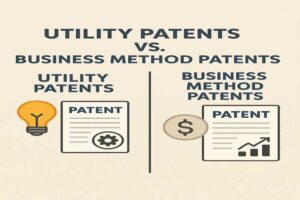Intellectual property (IP) — encompassing patents, trademarks, and copyrights — has become a cornerstone of corporate valuation and financing.
With the advent of knowledge-based economies, IP has secured a pivotal position as a significant asset class, often playing a critical role in a company’s overall worth and growth trajectory.
In recent times, however, there is a growing discourse on the desirability of separating IP from a company by putting it into another company not involved in the financing and generally closely help by the majority shareholder/s, founder/s and/or management.
While seemingly attractive, this approach is fraught with potential pitfalls.
The purpose of this article is to articulate the legal and economic arguments against separating IP from corporate financing into a different entity, even if said entity is the holding or the wholly owned subsidiary.
Obviously or not IP securitization is not targeted by this article. As contrarily to a separation from owning entity, IP securitization always legitimates, and generally increases, the value of IP on the balance sheet of the financed company, in other words its issuer.
Intellectual Property as Integral to Corporate Identity & Value
IP represents a company’s competitive edge and its potential for growth. For tech start-ups and pharmaceutical companies, patents may be the lifeblood of their existence; for retail firms, the brand value encapsulated in trademarks may be their most valuable asset. These IP rights often serve as a differentiating factor in crowded marketplaces, and thus have a direct bearing on the company’s market capitalization and its attractiveness to investors.
IP and Corporate Financing: An Inseparable Nexus
The integral nature of IP to a company’s identity and value makes it a vital component in corporate financing. Corporations frequently leverage their IP rights to secure financing for growth and expansion. By pledging these rights as collateral, firms can negotiate favorable financing terms and interest rates. Separating IP from corporate financing could unduly limit a company’s funding options and reduce its ability to tap into capital markets, which could hamper its growth prospects.
Threat to Innovation and Corporate Growth
Separating IP from a company’s assets could also impede innovation. The promise of financial gain through IP monetization serves as an important motivation for continuous investment in research and development (R&D). By decoupling IP from financing, corporations may face reduced incentives to innovate, which could lead to slower technological progress and growth.
Creation of an Unnecessary Market Layer
In a scenario where IP is separated from corporate financing, we risk creating an unnecessary market layer, potentially making the process more convoluted. Companies would then need to deal with two distinct entities for their assets: one for physical assets and another for IP. This bifurcation can increase transaction costs, create valuation difficulties, and introduce complexities related to asset management and control.
Potential Erosion of IP Rights
Under the traditional model, the IP rights are well-defined, protected, and enforced within the company’s legal structure. However, if these rights are separated from corporate financing, there could be complications in enforcing these rights and dealing with infringements. The protective cocoon that the corporate legal entity offers to IP could be compromised, potentially leading to an erosion of these rights.
Increased Complexity and Risk of Litigation
The decoupling of IP from a company’s financing mechanisms could significantly increase the complexity of legal transactions and raise the risk of litigation. Managing and transferring IP rights is a complex process fraught with potential legal pitfalls. Given the intangible nature of IP, disputes related to ownership, valuation, and infringement could multiply if these rights are separated from the financing structure.
IP Rights and Legal Protection
The traditional model of linking IP to corporate financing provides robust legal protection to intellectual assets. For instance, under current patent law, the corporation that owns the patent can sue for infringement. This legal enforcement mechanism directly contributes to the valuation of IP, reinforcing its role as a collateral in financing arrangements. However, if IP were separated from a company’s financing structure, questions about legal ownership and enforcement could arise, potentially diminishing the value of these intellectual assets.
The IP Market and Price Discovery
The existence of an active market for IP rights ensures the most efficient allocation of resources, and the best price discovery mechanism. If IP and corporate financing were to be separated, it could lead to market inefficiencies. For instance, in the absence of a robust market for standalone IP, price discovery could become challenging, leading to potential undervaluation or overvaluation of assets.
IP and Corporate Responsibility
In many cases, corporations are required to use their IP in a socially responsible manner. For instance, pharmaceutical companies often have to balance their IP rights against the need to make essential medicines accessible to the public. If IP rights were separated from the company’s core operations and financing, there could be a dilution of this sense of corporate responsibility. Furthermore, it may become challenging to hold a separate IP entity accountable to the same standards as the originating company.
Impact on Corporate Structure and Governance
The proposed separation could also have far-reaching implications on corporate structure and governance. Current corporate structures are geared towards a holistic approach where IP is treated as an integral part of the corporate entity. This ensures a unified approach to decision-making and strategy. Fragmenting this structure could lead to discordant decision-making, potentially affecting the company’s overall performance and growth.
Incentivizing Innovation and Entrepreneurship
Lastly, we must remember that the promise of potential profit from IP rights incentivizes innovation and entrepreneurship. By tying IP to a company’s financial success, we encourage continuous R&D and risk-taking. Separating the two could disrupt this incentive structure and stifle the entrepreneurial spirit, thereby impeding the advancement of technology and society.
14. **Conclusion**
In conclusion, while the idea of separating IP from corporate financing might seem to offer a panacea for some perceived issues, in reality, it could usher in a Pandora’s box of new challenges. The current model of intimately linking IP to a company’s financial structure incentivizes innovation, ensures efficient capital allocation, and promotes a healthy ecosystem for the protection of IP rights. It is, therefore, incumbent upon us as stakeholders in this system — legal professionals, corporate entities, and legislators alike — to appreciate the potential repercussions of such a separation, and work towards strengthening the existing frameworks that have served us well thus far.
In the dynamic, knowledge-driven world of the 21st century, we must strive to balance the need for innovation and growth with the necessity for regulation and accountability. This balance is best achieved through maintaining the vital linkage between intellectual property and corporate financing.
Заключение
While the idea of separating IP from corporate financing may appear to offer certain advantages at a superficial level, a deeper analysis reveals significant drawbacks.
Such a separation could limit funding options, impede innovation, increase transaction costs, complicate enforcement, and raise the risk of litigation.
It is therefore paramount that we maintain the close nexus between IP and corporate financing to ensure the seamless functioning of our knowledge-driven economies.
The focus should be on creating a robust legal and regulatory environment that encourages innovation, protects IP rights, and facilitates corporate growth through strategic financing options.







